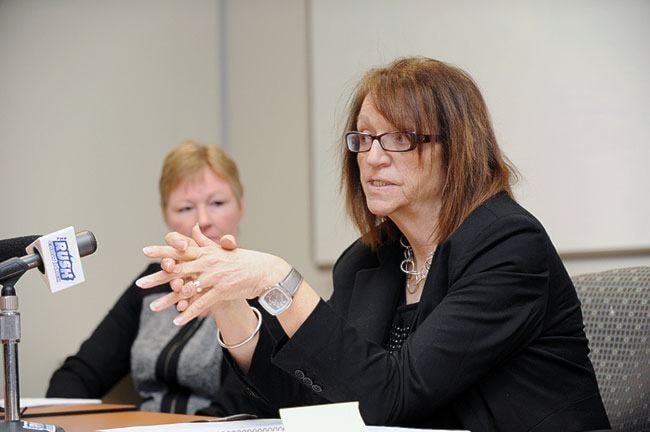It’s too early to ask Yukoners what they would like to see in a new continuing care facility, according to officials with the Department of Health and Social Services.
“It’s way too early in the phase to do public consultation, that happens much further along,” said Paddy Meade, deputy minister of health.
The department has to do its homework first before going out to the community, and that’s what they are doing now, she said.
The Yukon government raised alarm bells last month when it announced it would build a 150-bed continuing care facility in Whitehorse, with the possibility of phasing in another 150 beds.
Both opposition parties raised concern that the government committed to this project before consulting Yukoners.
But the government has completed a needs assessment that found that we will need those beds.
The territory will need 320-380 beds by 2021 and 430-550 beds by 2035, and those are conservative estimates, said Cathy Morton-Bielz, assistant deputy minister for continuing care.
Those projections have been confirmed by a review of the needs assessment, and a contractor to the government is currently working on a business case that will refine that data and start to look at options for design, she said.
It’s important to have the right kind of beds available, because the alternative can be very expensive, she said.
There are currently 26 people on the wait list for a continuing care beds, with another 22 waiting for assessment. The average wait time is four months.
“It’s growing each month,” said Morton-Bielz.
Those waiting for continuing care often end up in the acute care, or hospital, system.
A continuing care bed costs about $350 a day, compared with more than $2,000 for acute care.
Yukoners will have an opportunity to give their input on the design of the new facility, but not until the department has some options to present, said Morton-Bielz.
The department must first look at what the standards and best practices are nationally, to make sure that the facility will meet the needs of clients.
That doesn’t mean that it will look like an institution or warehouse.
“We will certainly not be looking at old-style design, the type with double-loaded corridors and loud, noisy, confusing dining halls,” said Morton-Bielz. “It will be designed to best-practice standards, and those include segregated living units, or neighbourhoods, that are warm, home-like, and easy for residents to navigate and to socialize in.”
Those “neighbourhoods” would typically each house 20-24 clients, she said.
Another concern raised by the NDP Opposition is that centralizing continuing care in Whitehorse will not meet the needs of people from the communities.
But that’s the only way it can be done, said Morton-Bielz. While the intent is to keep people in their homes and communities for as long as possible, people with complex needs will ultimately need to move to a larger centre to get appropriate care.
That’s the same anywhere in Canada, she said.
“Our communities are extremely small and they generate very little need for expensive and specialized services.”
Dawson’s McDonald Lodge, Yukon’s only continuing care facility outside of Whitehorse, offers a lower level of assistance than what can be delivered in the capital. Even today, clients with higher and more complex needs must be moved to the city.
This year’s budget has $6.9 million allocated for planning and design of the facility.
If all goes perfectly smooth, there could be some design options on the table this time next year, said Morton-Bielz.
Contact Jacqueline Ronson at
jronson@yukon-news.com
